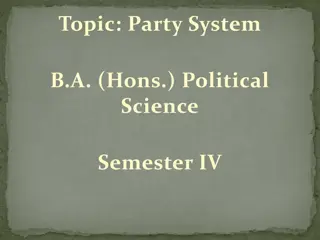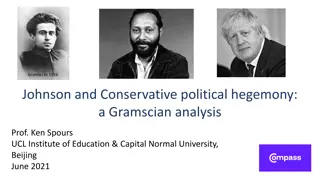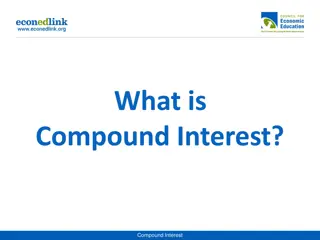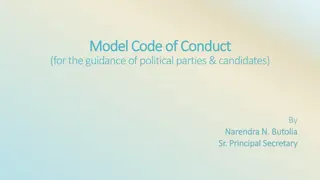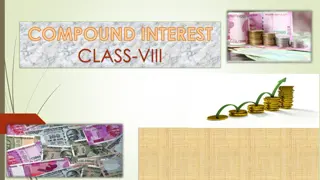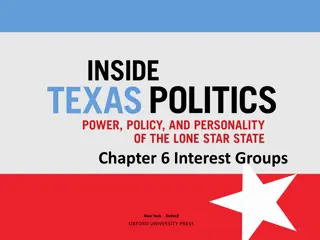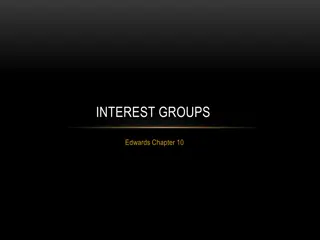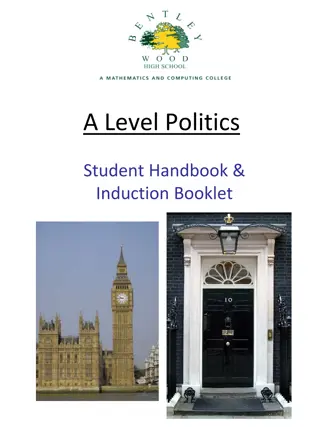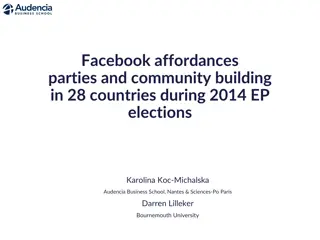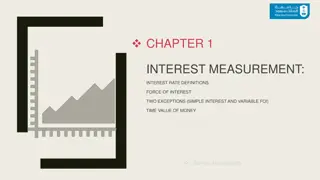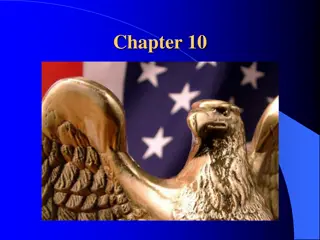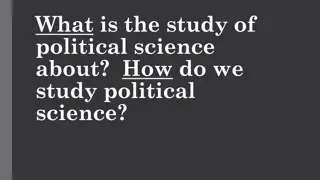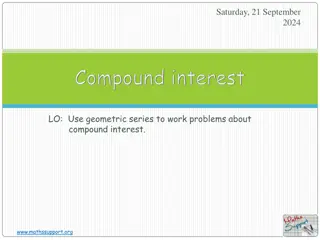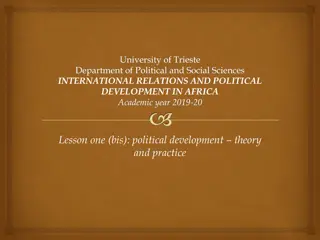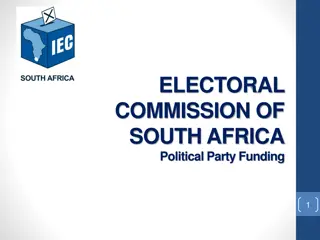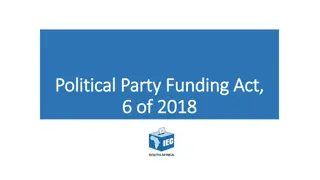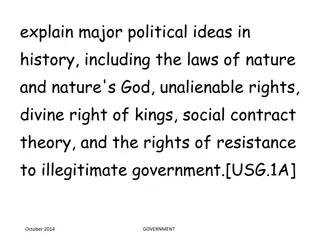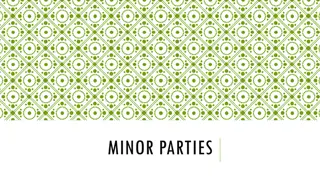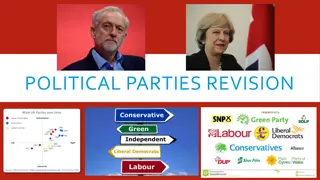Understanding Interest Groups and Political Parties in American Politics
Interest groups play a significant role in American politics, aiming to influence government decisions through lobbyists and various strategies. They represent different interests such as economic, public, and intergovernmental. Lobbyists engage with federal branches and judicial institutions, utilizing research, networking, and financial resources. Despite challenges in measuring their influence, interest groups have a notable presence. Political parties are vital in the U.S. government, carrying out essential functions in championing ideas, candidate selection, voter mobilization, post-election activities, and integrating new participants into the political process. The two-party system, dominated by Democrats and Republicans, has persisted for over two centuries, with occasional challenges from third parties.
Download Presentation

Please find below an Image/Link to download the presentation.
The content on the website is provided AS IS for your information and personal use only. It may not be sold, licensed, or shared on other websites without obtaining consent from the author. Download presentation by click this link. If you encounter any issues during the download, it is possible that the publisher has removed the file from their server.
E N D
Presentation Transcript
Chapter 9 Interest Groups and Political Parties
Interest Group Roles in American Politics Interest groups, or organizations that seek to influence government, employ lobbyists to pursue benefits for their clients or membership. Groups serve their members by communicating political information to them, analyzing and relating members views to policymakers, and mobilizing people to act politically. A long debate continues among pluralist, hyperpluralist, and power elite theorists about whether the collective public is well represented by interest groups. Interest groups come in several types: economic groups such as businesses or labor unions, citizens or public interest groups, and intergovernmental organizations.
Interest Groups and the Federal Branches of Government Lobbyists perform a wide range of roles, from researchers to social butterflies. Lobbyists working in specific areas sometimes still form iron triangles with congressional staff and executive-branch officials. More fluid issue networks featuring lobbyists as central players increasingly characterize today s complex policymaking environment. Successful federal lobbyists master political information gathering and analysis, engage in political campaigns, and form close ties with one of the two major parties. Interest groups also lobby the judicial branch by funding confirmation battles, filing amicus curiae briefs, and financing litigation.
Interest Groups and Power Because of the difficulty of directly measuring interest group influence in government, researchers turn to metrics like number of lobbyists and the amounts of funds they spend on lobbying. Beginning in the mid-1960s, an advocacy explosion saw lobbyist numbers climb dramatically. Resources devoted to lobbying also rose sharply beginning in this period. Despite their extensive presence and billions of dollars in spending, lobbyists are not likely to change congressional minds on high-profile votes; their role is more akin to supporting the members already on their side. Votes on more obscure or highly technical topics may be easier for lobbyists to sway.
Political Parties and U.S. Government Political parties are an essential part of U.S. government, carrying out five major functions: championing ideas, selecting candidates, mobilizing voters, organizing postelection government activity, and integrating new voters into the political process. America s two-party style has endured for more than two hundred years, with Democrats and Republicans the main standard-bearers since 1856. Two main parties have always dominated U.S. party politics and since 1856 it has been the same two parties, Republicans and Democrats. Election rules help explain this dominance, which is challenged periodically by third parties; none has ever managed to break through. We count at least six party systems since the U.S. founding. The latest, which began in 1969, is the period of very close elections.
Party Organization and Identification A substantial majority of voting-age Americans identify strongly with one of the two major parties. Others declare themselves independents their numbers have been rising. Our powerful sense of party identification is a result of many factors, including parental influence, political context, and even personality type. Party identification in turn helps shape our voting patterns, the ways we filter political information, and our bedrock ideas about politics and government. Each party includes three groups: the party organization, the party in government, and the party in the electorate.
Party Competition . . . and Partisanship After declining thirty to forty years ago, the main political parties are now both thriving and highly competitive. Recent national elections have featured narrow margins of victory in presidential races and frequent shifts in party control. This competition has helped fuel a rise in partisan differences, evident among both national policy makers and the U.S. public. Most Americans and many social scientists believe that partisanship is affecting the quality of American government. The intensity of the conflict, they believe, will weaken our institutions.


